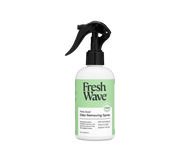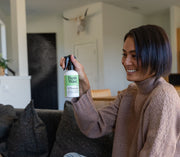So You're Potty Training Your Puppy? Everything You Need to Know
Adopting a puppy is the start of a wonderful relationship filled with affection, play, companionship, and love. However, every pet owner needs to know how to potty train puppy to have a happy life together. Potty training simply means that you impress upon your new pet that there are approved places to potty, and indoors is off-limits.
It’s an unfortunate fact that house soiling is one of the main reasons why dogs get surrendered to shelters. The good news is that with a little effort, you can train your puppy so you don’t have to toss out a favorite rug or face the unpleasant surprise of a mess on your floor.
How Long Does it Take to Potty Train a Puppy?
One of the things pet owners most want to know when it comes to how to potty train puppies is how long it takes. This varies depending on the dog’s age and how it learns. Your dedication to a consistent schedule and appropriate training methods are also important factors. The timeline can last anywhere from just a few days to months. Typically, you can consider your dog fully potty trained once an entire month has passed without any more inside accidents.
Tips for Helping to Potty Train Your Dog
If you are looking for advice on the best way to potty train a puppy, patience and a consistent routine are two keys to keep in mind. So develop a plan, gather the necessary supplies, and arm yourself with these puppy potty training tips to get started.
Approach Potty Training with the Right Attitude
Potty training a puppy, just like any new behavior that you introduce, takes some time. Remember that your pet is young and learning. Stay patient with your puppy and understand that accidents are likely to happen, but they are part of the training process. Try to remain calm and understanding and refrain from getting upset. Negative emotions and scolding your dog do little to correct poor behavior. In fact, doing so can cause stress, anxiety, and fear that sets your training progress back.
Focus on providing plenty of praise and positive reinforcement when your puppy does the right thing. Use expressive and cheerful emotions and favorite treats as rewards.
Pay Attention
Part of your role during puppy potty training is to pay close attention. Every pet gives you clues when they need to go outside and your job is to learn your dog’s unique tells. Some are subtle, so watch your puppy closely to familiarize yourself with their behavior patterns. If you catch your dog starting to squat, act quickly to take her outside. Remember to provide praise if she goes outdoors.
Stick to a Routine
A consistent routine is your best approach to achieving results. Put your puppy on a regular feeding schedule and give appropriate food that is easy for their tummy to digest. Make frequent walks part of your daily routine. Your pet needs plenty of exercise, and the time outdoors gives them a chance to relieve themselves.
Puppy bladders are tiny, so providing lots of opportunities to get outside and go is vital to teaching them good habits. Make a point to schedule walks or even a quick trip outside for the following:
- Upon waking in the morning
- Before bed
- After time in a crate
- After indoor playtime
- After naps
- After eating and drinking
- After chewing toys
Take your puppy to the same spot outside, so they associate it with bathroom breaks. Reinforce this by choosing a word or phrase to use as a reminder of what to do. Your best bet is to take your puppy outside once every two hours at the beginning. It’s a big commitment to keep up with this schedule, but your efforts determine how quickly the process gets completed.
Use a Crate
Crates are an excellent tool when it comes to potty training your dog. The right size gives your pet room to stand up, turn around, and lie down comfortably. When used correctly, they make your life easier and provide a safe and secure spot that your pet loves. You can use the crate for multiple purposes, like potty training, travel, and even convalescence.
Dogs are naturally clean and don’t want to live in a messy environment, so when you keep your puppy in a crate and he feels the urge to go, he’ll start to scratch and whine to get out. This is your cue to let him outside immediately. Don’t delay and let your dog make a mess in the crate, as this behavior then spreads to your home. Try tethering your dog or confining him to a small space as an alternative to using a crate.
Paper Training and Puppy Pads Are a Temporary Solution
When you are first starting out to train your puppy, laying down some pads or papers to keep any mess contained is a good idea, but you don’t want your pet to become used to the idea of going to the bathroom indoors. Try to use these only in emergency situations, such as when you need to be away for an extended period.
Puppies under a year old can typically control their bladder for about one hour per month of age. For example, a three-month-old puppy should have little trouble holding it for three hours. Once your dog matures, he can control his bladder for longer periods of time.
How to Help Get Rid of Dog Pee Smell
Potty training a puppy is a process where you should expect the occasional accident, so it’s a good idea to find an effective odor removing product to keep your home smelling clean. Fresh Wave’s plant-based pet odor removing spray is essential to have on hand during potty training time. It uses safe and natural ingredients proven to eliminate stinky smells so you can clean up accidents quickly and get back to enjoying time with your new puppy.
Keep Reading



